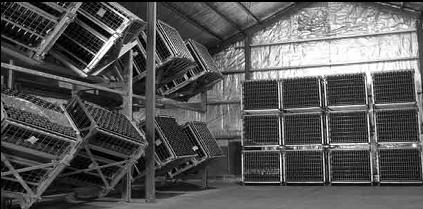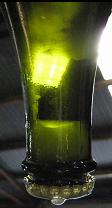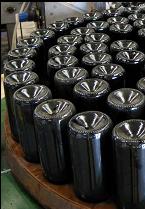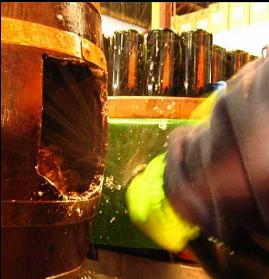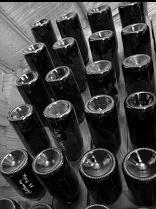At the end of the maturation period, the yeast 'lees' sediment, which has remained inside the bottle since the secondary fermentation, needs to be removed via a process referred to as riddling and disgorging.
Riddling
Riddling traditionally takes place on wooden racks where the bottle is turned by hand at a steep angle. At Kilchurn, riddling is an automated affair. The wine is transferred from storage bins into riddling cages in a horizontal position. These cages are placed onto automated riddling machines. After 7 days of rotations and elevations, all the bottles are upside down with the yeast lees sediment sitting in the neck of the bottle, ready for disgorging.



